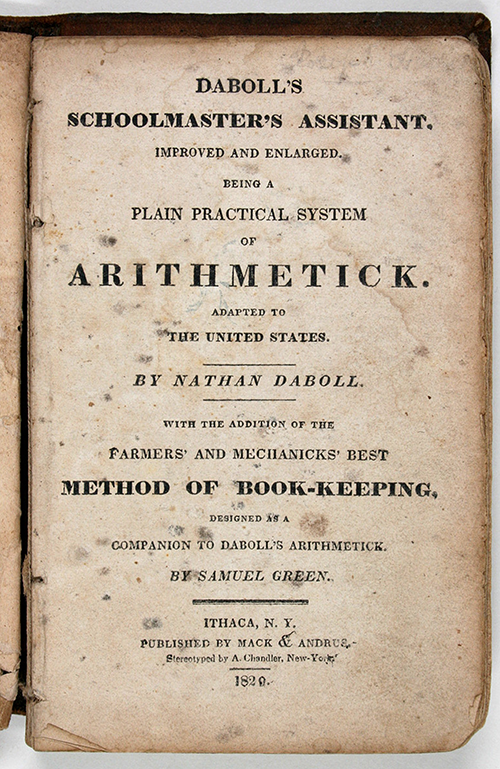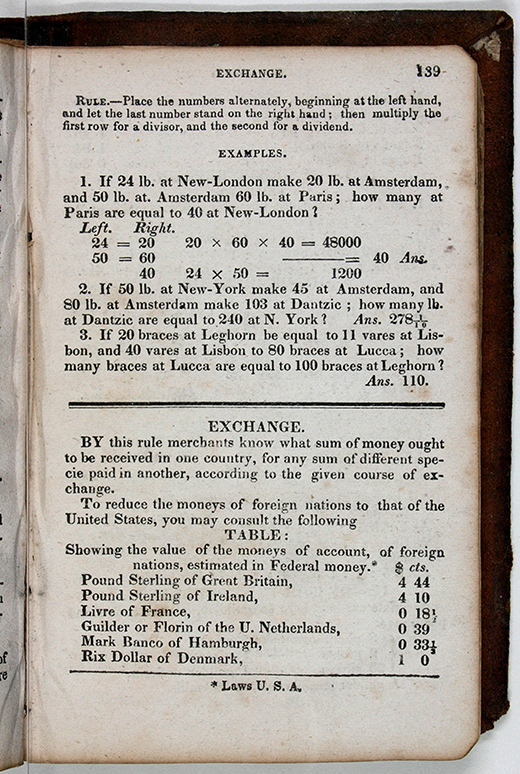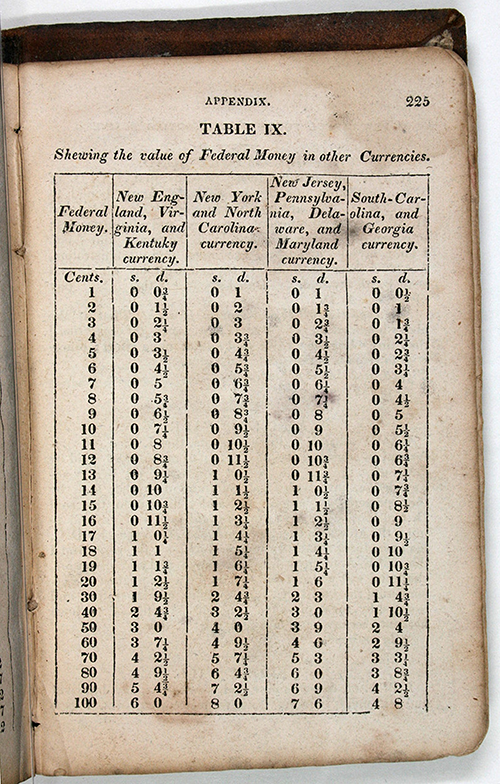- About MAA
- Membership
- MAA Publications
- Periodicals
- Blogs
- MAA Book Series
- MAA Press (an imprint of the AMS)
- MAA Notes
- MAA Reviews
- Mathematical Communication
- Information for Libraries
- Author Resources
- Advertise with MAA
- Meetings
- Competitions
- Programs
- Communities
- MAA Sections
- SIGMAA
- MAA Connect
- Students
- MAA Awards
- Awards Booklets
- Writing Awards
- Teaching Awards
- Service Awards
- Research Awards
- Lecture Awards
- Putnam Competition Individual and Team Winners
- D. E. Shaw Group AMC 8 Awards & Certificates
- Maryam Mirzakhani AMC 10 A Awards & Certificates
- Two Sigma AMC 10 B Awards & Certificates
- Jane Street AMC 12 A Awards & Certificates
- Akamai AMC 12 B Awards & Certificates
- High School Teachers
- News
You are here
Mathematical Treasures - Nathan Daboll's Schoolmaster's Assistant

Nathan Daboll (1750–1818) was a mathematics teacher at the Academy in Plainfield, Connecticut. He also ran a school of navigation for merchant seamen in New London, Connecticut, and published almanacs during the period of the Revolutionary War. Herman Melville knew of Daboll and mentioned him in his novel Moby-Dick (1851). Daboll first published his Schoolmaster’s Assistant in 1799. He expanded and updated the work in 1814. The title page of the further-expanded 1829 edition is shown below. This book contains a supplement on accounting added by Daboll’s publisher, Samuel Green. Daboll’s book was extremely popular in early 19th-century America. In his history of mathematics education in the United States (1890), the historian Florian Cajori designated Nathan Daboll as one of the three greatest American arithmeticians of the period.

On page 12, tables of measurement for length, “long measure,” and liquids such as wine and oil are given. Note the “inch” defined as the length of three barleycorns.

On page 139, Daboll provided examples of using “the merchant’s rule” or "rule of three" to work problems in exchange. These problems are very similar to ones found in European commercial arithmetics of the Middle Ages.

This is Green’s supplement on accounting; the considerations of the learning needs of “farmers and mechanics” indicates the changing demographics of the young country.

On page 225, Table IX gives a listing of monetary conversions. At this time, the United States was just instituting a unified monetary system. Previously, each colony, now state, had its own system.
These images from its George Arthur Plimpton Collection are presented through the courtesy of the Columbia University Libraries.
Frank J. Swetz (The Pennsylvania State University), "Mathematical Treasures - Nathan Daboll's Schoolmaster's Assistant," Convergence (January 2021)




